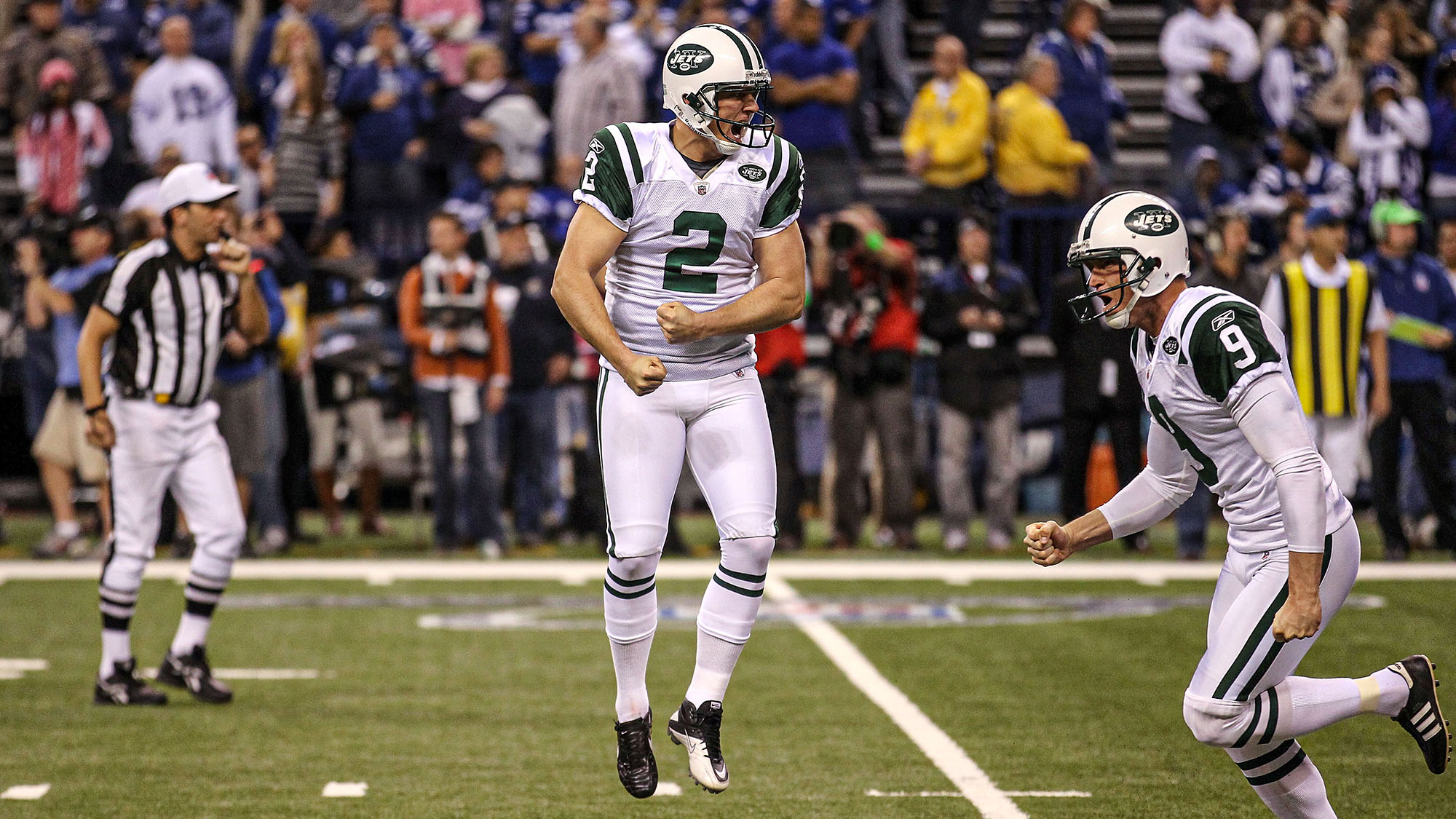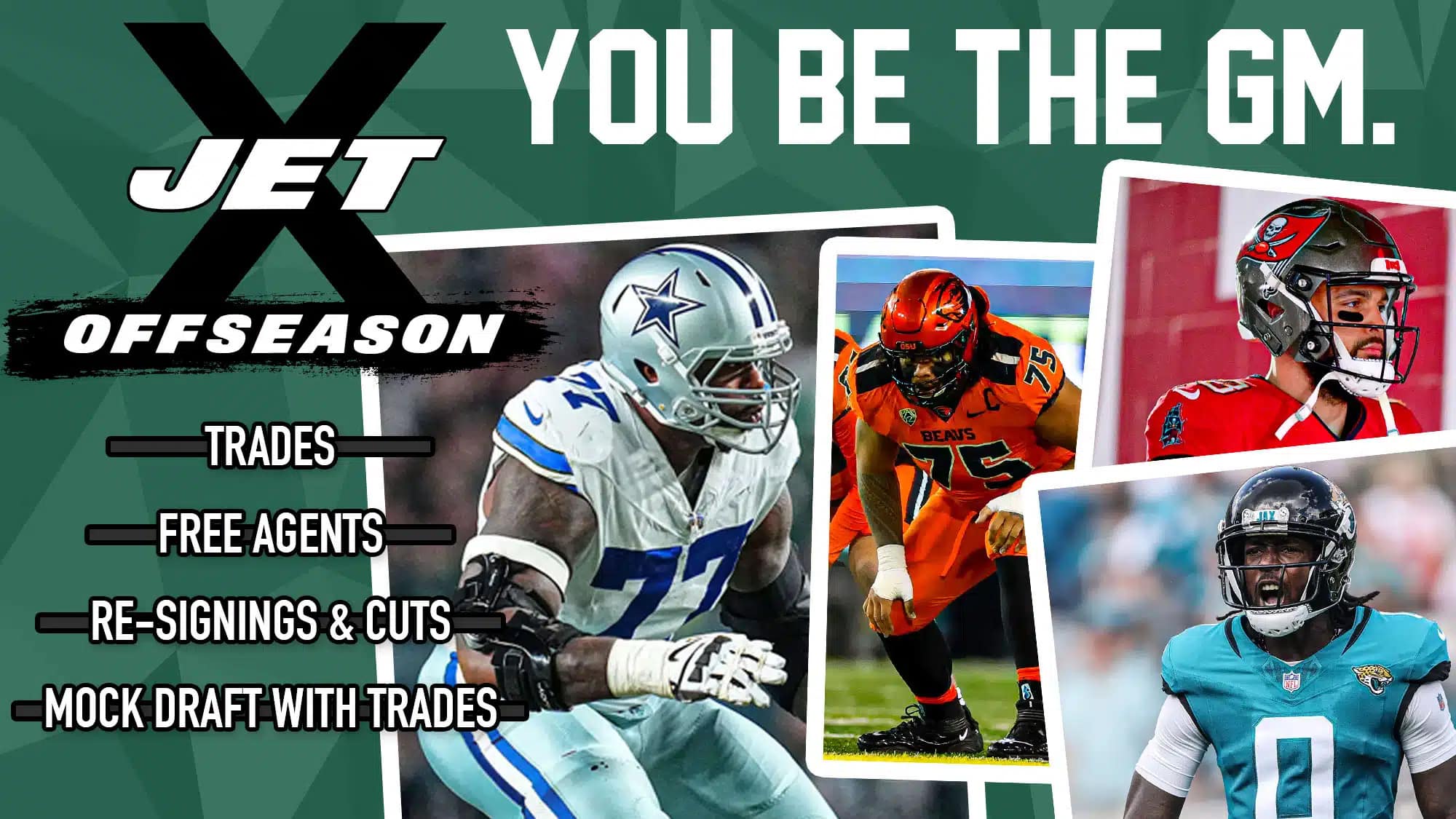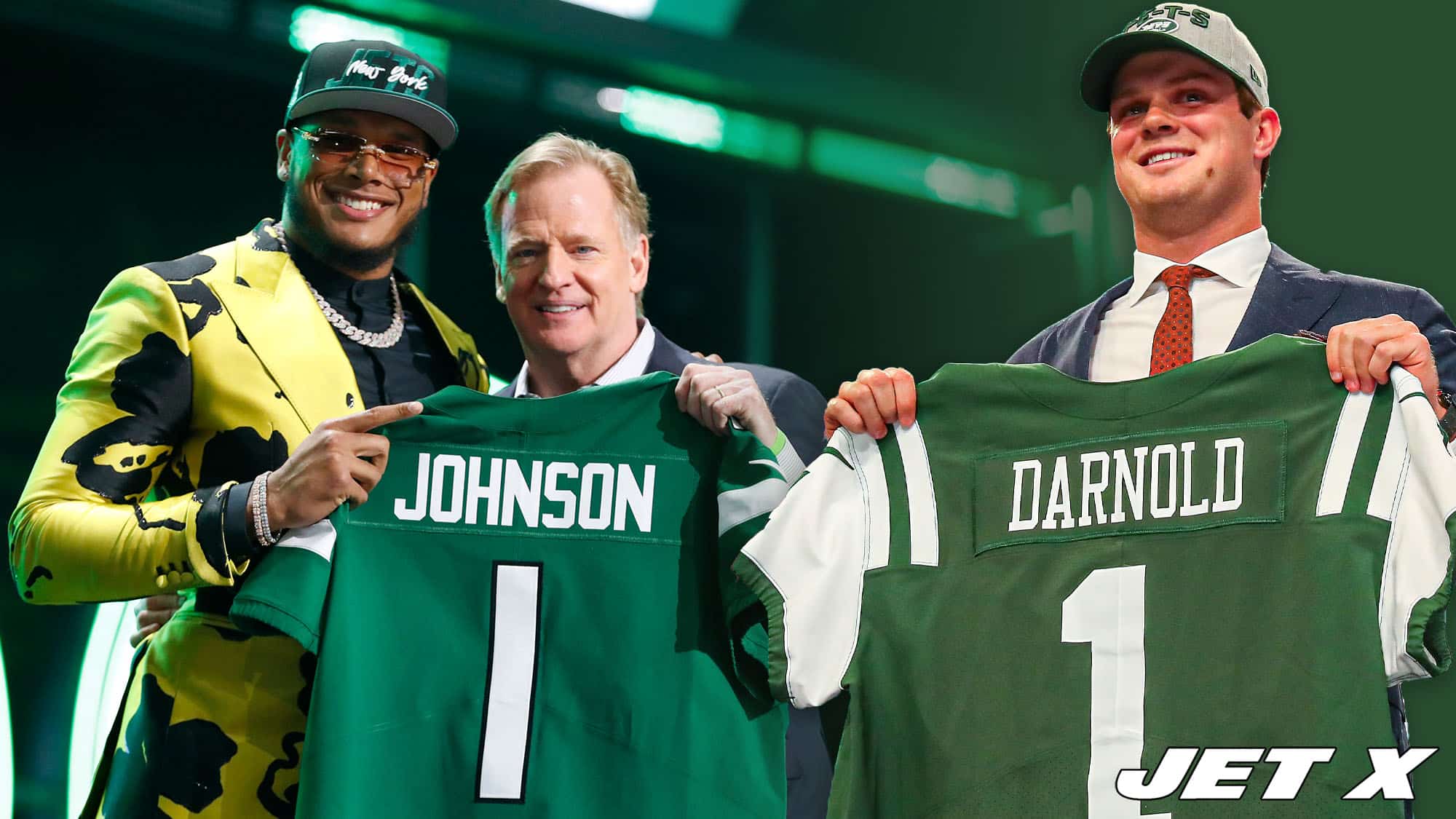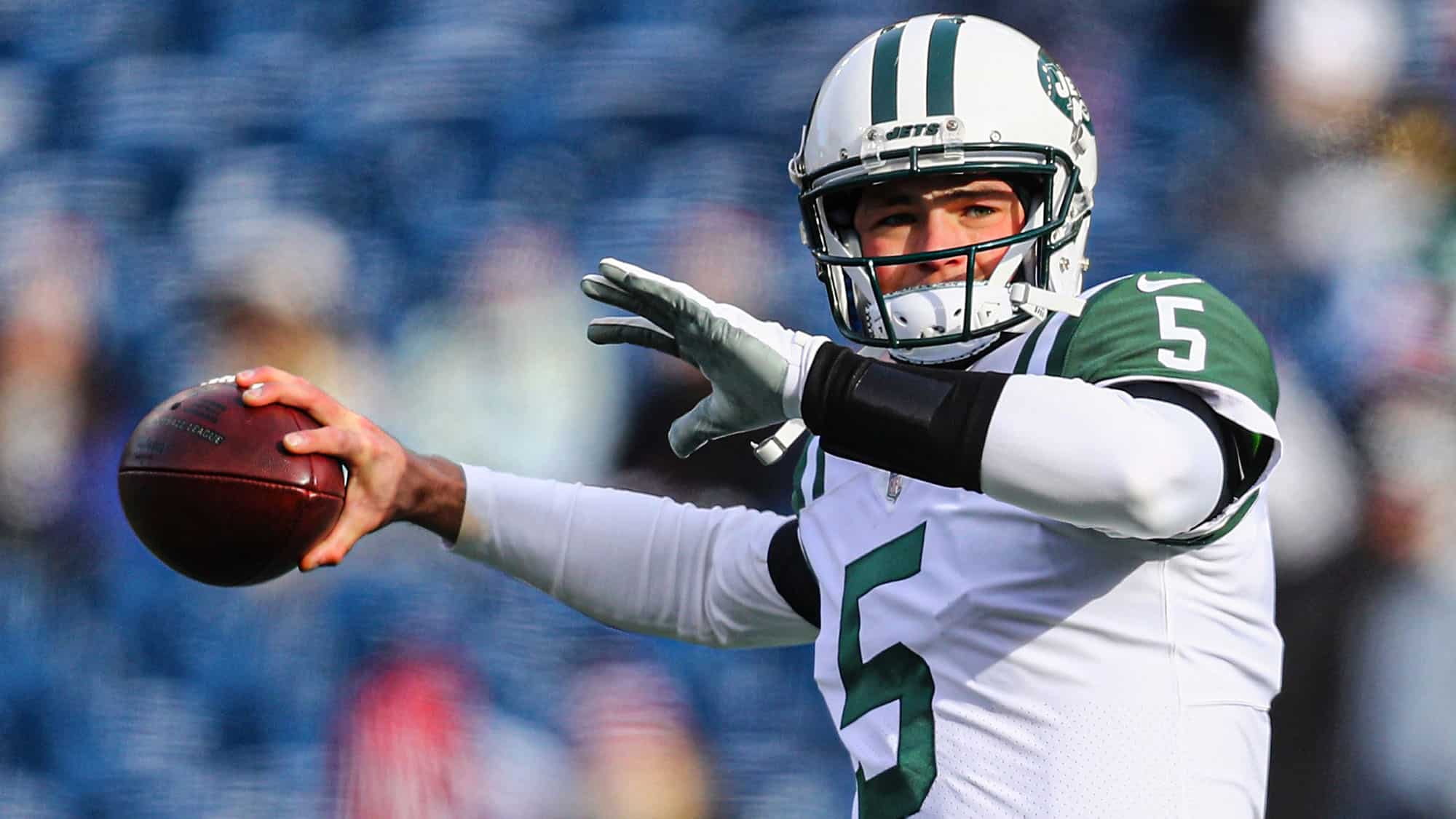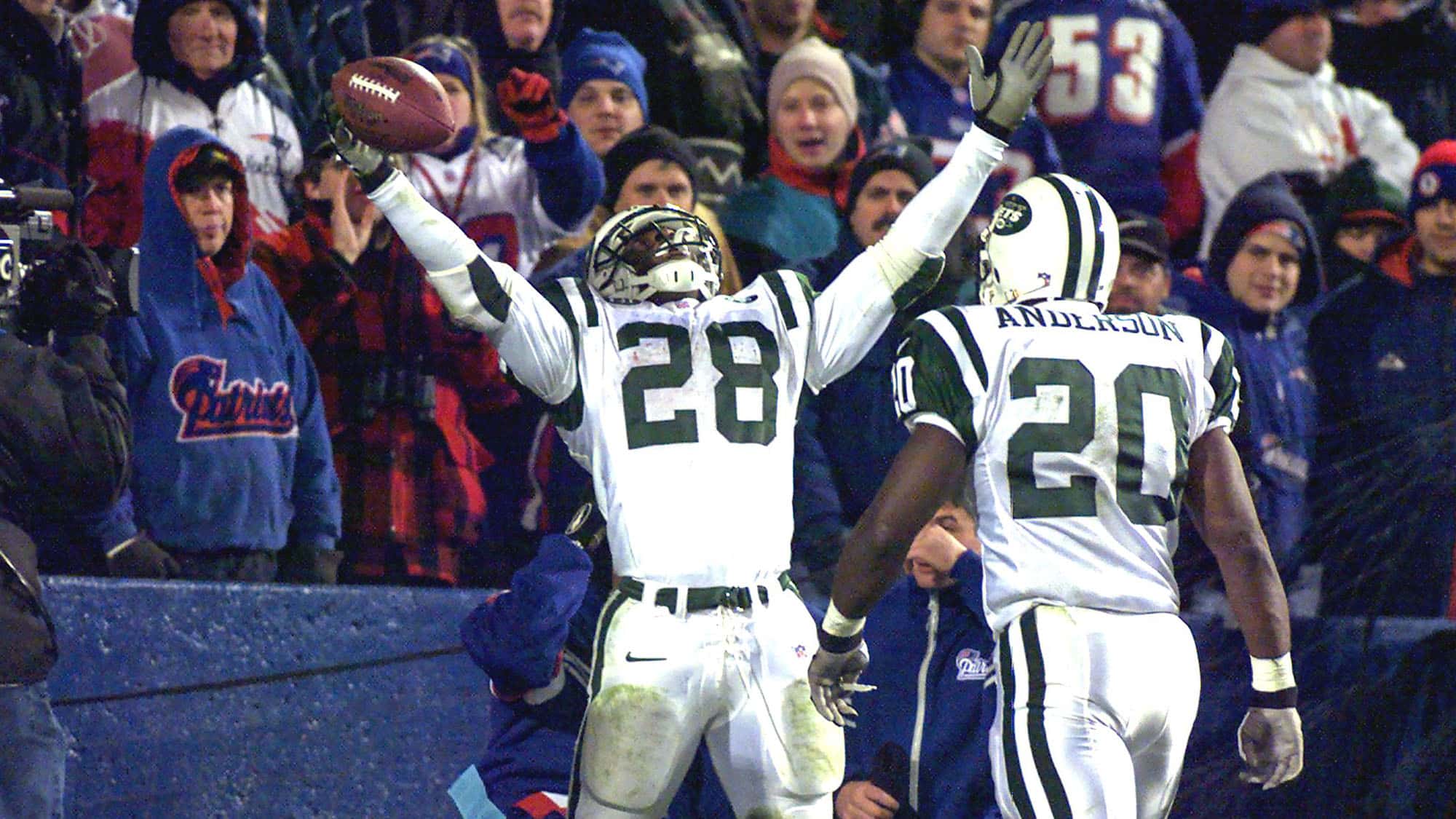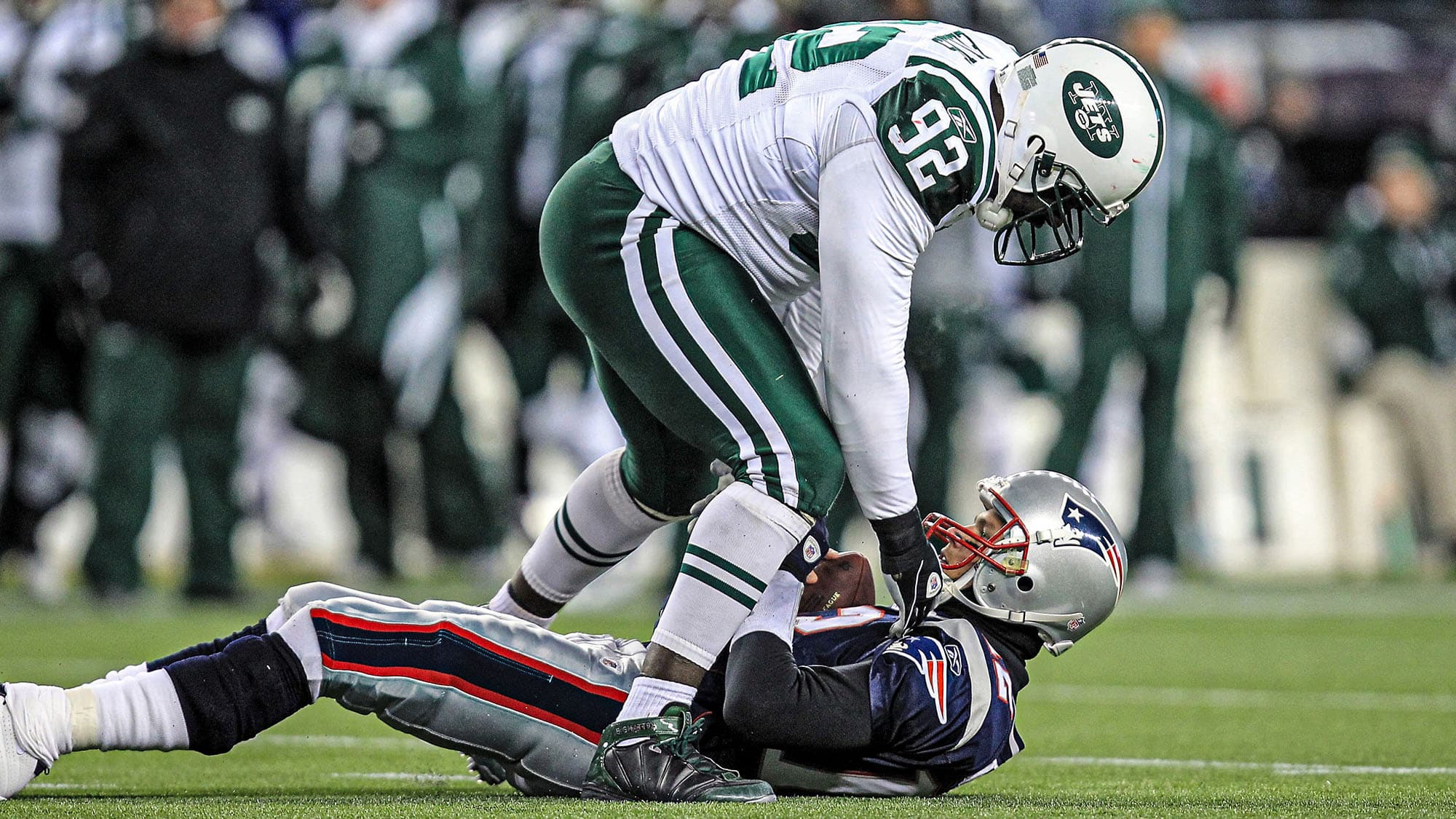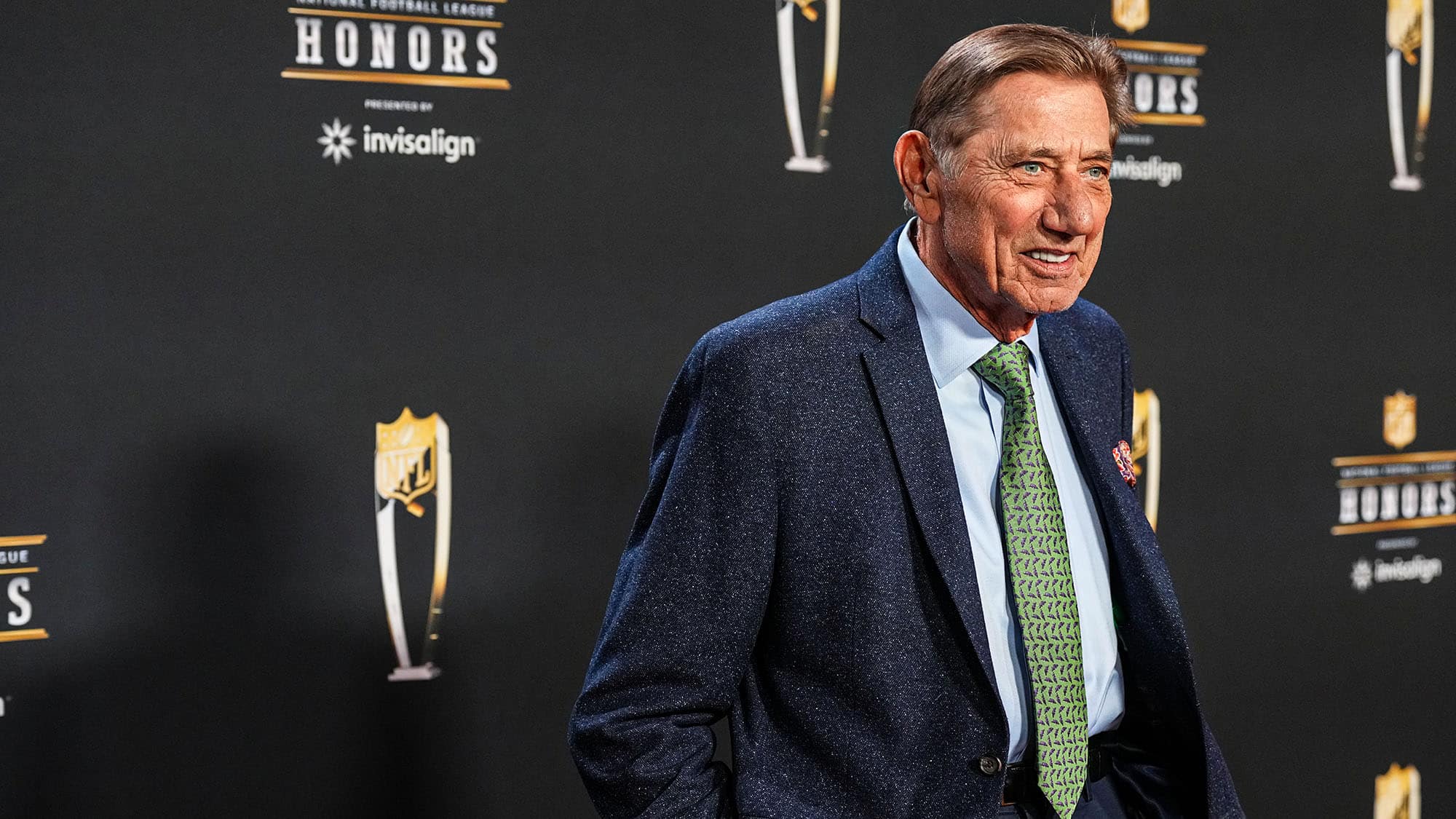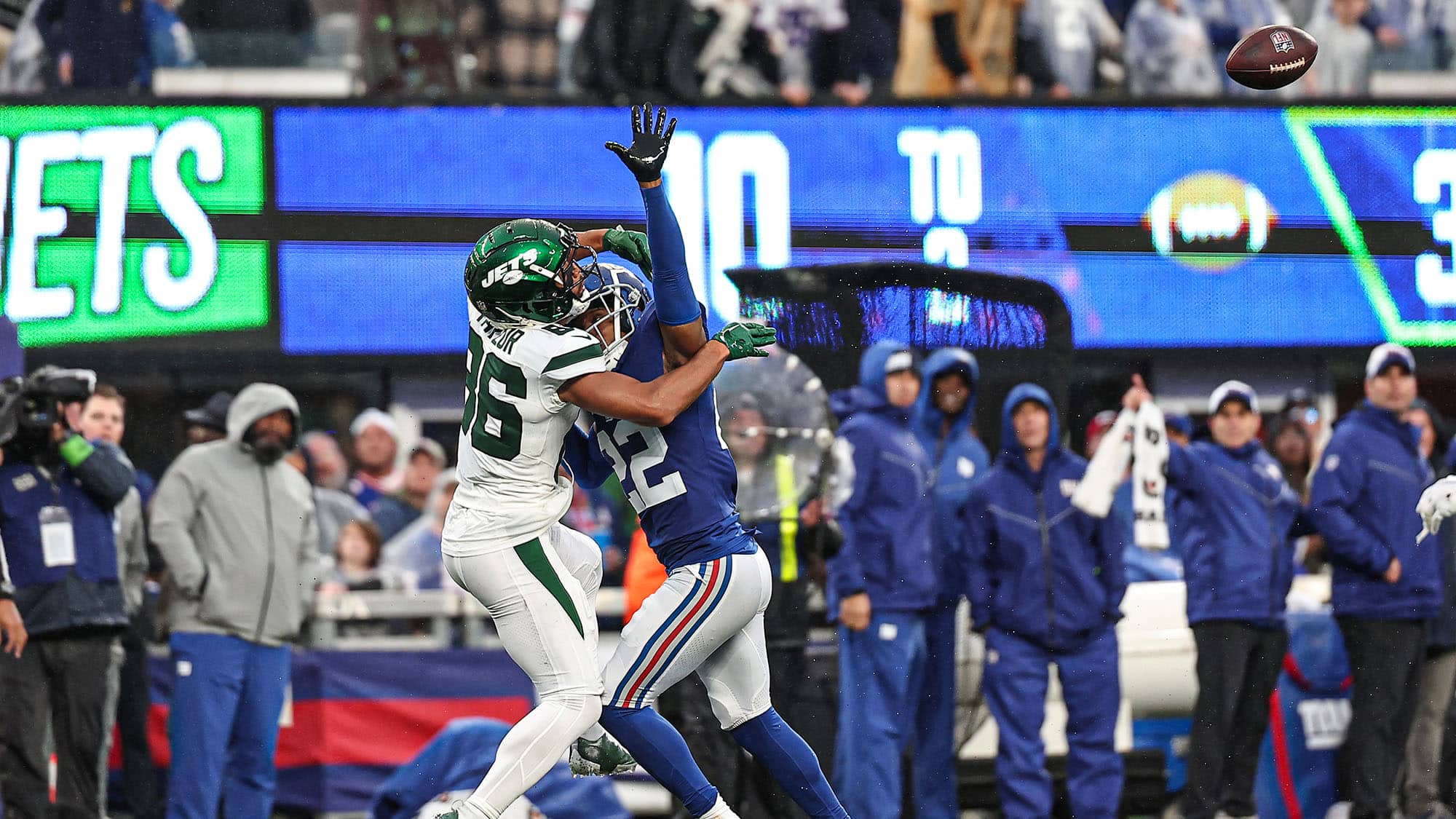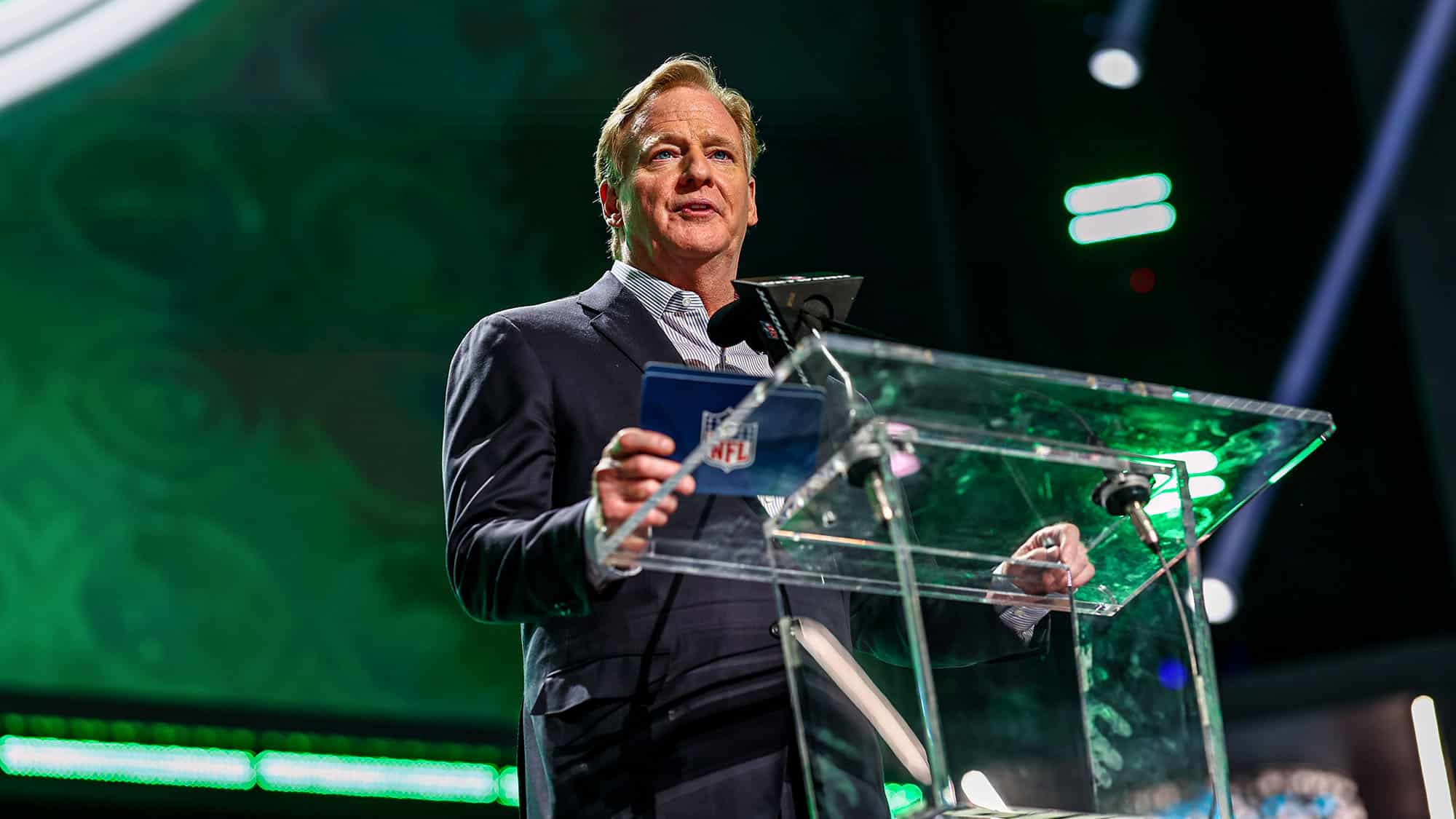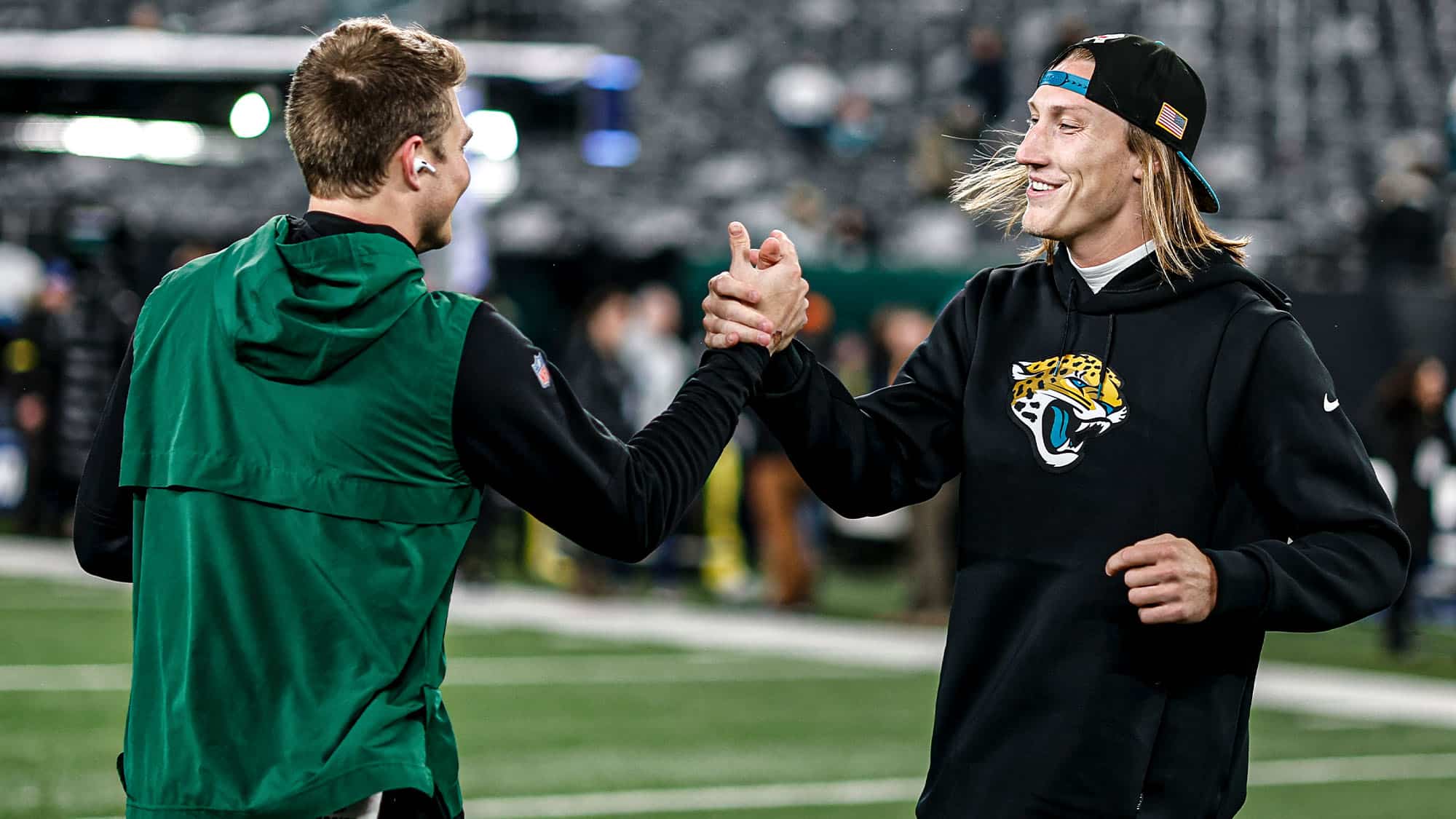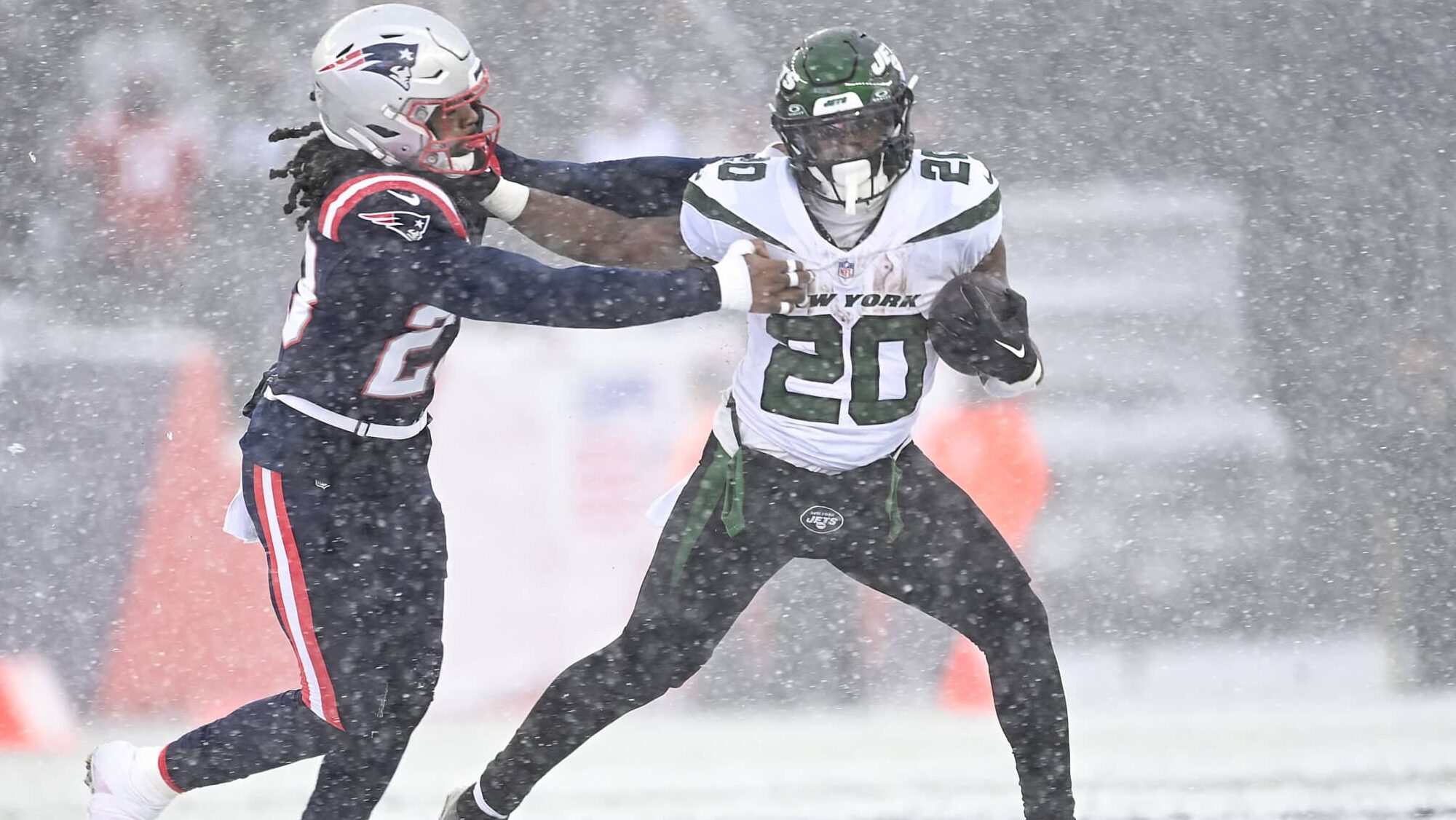Zach Wilson acknowledged the day with a tribute to RB La’Mical Perine
It takes two to make a thing go right. So all was undoubtedly well on Tuesday.
In one of the most satisfying instances of serendipity the Gregorian calendar has had to offer since its introduction in 1582, February 22, 2022 produced some variation of “2/22/22” … all of it occurring on a Tuesday, which many agreed to temporarily rename “Twosday” in celebration.
Those who rep the numerals on the New York Jets were among the many to acknowledge the matching date. Franchise quarterback and current wearer of the Jets’ No. 2 uniform, Zach Wilson, wished his 79,000-plus followers a happy holiday through the sharing of a photo alongside running back and ongoing owner of New York’s green No. 22 jersey, La’Mical Perine, who thanked Wilson for his observation.
2.22.22. Happy Twosday @LP_deucedeuce pic.twitter.com/8PxSJkzADt
— Zachary Wilson (@ZachWilson) February 22, 2022
My Brother 🤞🏾 https://t.co/j9h17lnLaA
— La’Mical Perine (@LP_deucedeuce) February 22, 2022
Could Wilson and Perine cause Jets fans to observe Twosday for years to come? They certainly have a lot to live up to, as Jets X-Factor looks back on the greatest Nos. 2 and 22 in franchise history.
Lee Riley (1961-62) – #22
Raised in Schenectady, Riley played seven professional seasons between the NFL and AFL, the final two coming with the New York Titans. Paving the way for future New York ballhawks, Riley led the AFL in interceptions in his final year with 11.
Lee wouldn’t be the last member of the Riley family to leave an impact on New York sports. Riley’s younger brother Pat went on to coach the New York Knicks for four seasons, guiding the team to the 1994 NBA Finals.
Play: 👉 the Jet X Offseason Simulator
Jim Hudson (1966-70) – #22
The Jets’ trek to the historic, if not fleeting, glory of Super Bowl III is mostly remembered for Joe Namath’s guarantee, but the Jets’ defense played a major role in securing that upset victory over the Baltimore Colts.
Jim Hudson came up big through the 1968 season, earning five interceptions during the regular season and making several big stops against the Oakland Raiders in the AFL Championship Game that punched New York’s ticket to Miami.
At the Orange Bowl, Hudson permanently shifted momentum to the Jets’ side with an interception of Earl Morrall in New York territory while the team carried a 7-0 lead in the final minute of the first half. The Jets took a permanent two-possession lead on their next possession, paving the way to the 16-7 win.
Burgess Owens (1973-79) – #22
Chosen 13th in the 1973 draft, Burgess Owens was a staple of the 1970s Jets and currently stands as one of a dozen players in team history to earn at least 20 interceptions (21).
Though Owens never appeared in a New York playoff game, he got his chance to shine in the postseason as a member of the Oakland Raiders, notably starring on their championship squad in 1980.
Retirement has been anything but for Owens, who has engaged in a variety of off-field endeavors. He currently stands for Utah in the House of Representatives and is the founder and CEO of Second Chance 4 Youth, a “non-profit program with the aim to end the cycle of generational incarceration and lower the rates of recidivism”.
Erik McMillan (1988-92) – #22
Another member of the Jets’ 20-interception club, Erik McMillan reached the end zone more often than some of his offensive teammates. His five-year Jets career saw him score seven defensive touchdowns, five earned via pick-six.
For his efforts during the 1988 season (which saw him earn eight interceptions), McMillan was bestowed the Defensive Rookie of the Year Award over Detroit’s Chris Spielman. Through consecutive appearances at the onset of his career, McMillan became the first player in Jets history to open his career with a pair of Pro Bowl appearances.
Raul Allegre (1991) – #2
Allegre is much better known for wearing a blue No. 2 New York uniform, playing six seasons with the Giants, but he came up huge for the Jets at the end of the 1991 season.
When longtime kicker Pat Leahy’s career ended due to a bout with sciatica, Allegre was added just in time for the Week 17 showdown against the Miami Dolphins. Allegre not only tied the game in the final moments of regulation but wound up winning it for the Jets on a 30-yard boot in the extra session that sent the team to the playoffs, ending a drought at four years.
https://twitter.com/jetsxfactor/status/1265784506621087748
Justin Miller (2005-09) – #22
Few have lived up to the name on the Jets’ helmets more than Justin Miller, who redefined New York speed in the early stages of the new century.
Miller still stands as the owner of the Jets’ second-best kick return average among those with at least 50 attempts (26.9 behind only Joe McKnight) and is one of three Jets who have taken at least three kickoffs back for scores (joining Leon Washington and Brad Smith).
After earning the AFC’s kick returner nomination for the 2007 Pro Bowl festivities, Miller took home a special Hawaiian souvenir in the form of the Fastest Man title in the festivities leading up to the exhibition.
https://twitter.com/NyjMike/status/1274352407850504192
Nick Folk (2010-16) – #2
Banished from Dallas after an injury-induced fall from grace, this No. 2 made the most out of a second chance in New York.
After public condemnation from head coach Rex Ryan when he struggled at the onset of his first season, Nick Folk united with special teams boss Mike Westhoff to reclaim the narrative on his NFL career.
Folk wound up becoming the Jets’ primary leg for seven seasons after capping off his first season by earning the game-winning field goal in the Jets’ Wild Card victory over the Colts.
Exactly 10 years ago today the #Jets went to Indy and beat the Colts to earn a trip to New England in the Divisional Round
– Clutch return from @CRO31
– Sanchez to Santonio and Braylon
– Nick Folk sends the Colts home with no time left#TakeFlight pic.twitter.com/kcdnqihNFg— NYJ MIKE (@NyjMike) January 8, 2021
The following season’s primetime opener saw Folk boot a victorious 50-yarder against his former employers. Folk’s 2013 output (33-of-36, 92 percent) created the second-best conversion rate in Jets history, a mark since tied by the next player on our list.
Jason Myers (2018) – #2
Jason Myers, one of the first players from Poughkeepsie’s Marist College to reach the NFL, spent only one year in New York but left a sizable presence in the team’s special teams record book. He matched Folk’s field goal and accuracy marks by going 33 for 36, with six of his 33 conversions coming from 50 yards away, setting a New York record.
Jason Myers. Still money. #Jets pic.twitter.com/ZXZLqZb7ha
— Rob Taub (@RTaub_) November 4, 2018
Myers also dabbled in the NFL’s historic ledgers, booting a league-record five field goals from at least 55 yards away. Though Myers earned a Pro Bowl nomination, the Jets allowed him to move on to Seattle during the ensuing offseason and have been struggling to pick up the pieces at kicker ever since.
Geoff Magliocchetti is on Twitter @GeoffJMags

